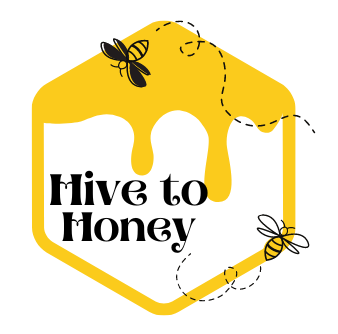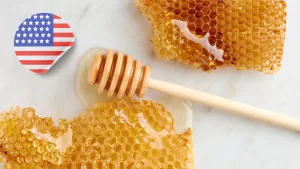Honey bees are extraordinary insects that play a crucial role in our ecosystem. Known for their contributions to pollination and honey production, honey bees are vital for agriculture and the environment. However, many people are unaware that there are various types of honey bees, each with unique roles and characteristics. In this blog post, we’ll explore the main types of honey bees, their functions, and the importance of these remarkable pollinators.
Table of Contents
ToggleWhy Are Honey Bees Important?
Before we delve into the different types of honey bees, it’s important to understand why they are vital to our ecosystem and agricultural economy:
- Pollination Powerhouses: Honey bees are responsible for pollinating about 75% of the fruits, nuts, and vegetables we consume, making them essential for food production.
- Honey Production: Beyond pollination, honey bees produce honey, which is not only delicious but also has numerous health benefits, including antimicrobial properties.
- Biodiversity Support: By pollinating a variety of flowering plants, honey bees help sustain biodiversity, contributing to the health of our ecosystems.
Main Types of Honey Bees
There are three primary types of honey bees within a colony: the queen bee, worker bees, and drones. Each type has specific roles and functions that are essential for the hive’s survival.
1. Queen Bees
Description: The queen bee is the sole reproductive female in the colony and is larger than the other bees. She has a long, elongated abdomen that enables her to lay thousands of eggs.
Role in the Colony:
- Reproduction: The queen bee’s primary role is to reproduce. During peak season, she can lay up to 2,000 eggs daily, ensuring the colony’s growth.
- Pheromone Production: She produces pheromones that help regulate the hive’s social structure, signaling to worker bees when it’s time to care for the brood or when to build more honeycomb.
Lifespan: Queen bees can live for several years, often up to five years, depending on environmental conditions and the overall health of the colony.
2. Worker Bees
Description: Worker bees are non-reproductive females responsible for most of the hive’s activities. They are smaller than the queen and have specialized body structures for their various tasks.
Roles and Responsibilities:
- Foraging: Worker bees collect nectar and pollen from flowers, which they bring back to the hive to feed the colony. Their foraging activities make them essential for pollination.
- Hive Maintenance: These bees clean the hive, build and repair the honeycomb, and take care of the brood (larvae and pupae).
- Defense: Worker bees protect the hive from intruders by stinging when necessary, using their stingers as a defense mechanism.
Lifespan: The lifespan of worker bees is relatively short, typically ranging from 6 weeks to a few months, depending on the time of year and their workload.
3. Drones
Description: Drones are male honey bees, characterized by their larger size and the absence of stingers. Their primary function is to mate with a queen from another hive.
Role in the Colony:
- Mating: Drones leave the hive to participate in mating flights, where they seek out a queen to mate with. Successful drones die shortly after mating, fulfilling their reproductive purpose.
- No Other Responsibilities: Unlike worker bees, drones do not forage for food or perform any hive maintenance tasks. They rely on worker bees for food and care.
Lifespan: Drones typically live for about 8 weeks. They are often expelled from the hive in the fall when resources become scarce.
The Importance of Each Type of Honey Bee
Understanding the roles of each type of honey bee is essential for appreciating how they contribute to the hive’s success and the overall health of our ecosystem.
- Queen Bees ensure the survival and reproduction of the colony, providing the next generation of bees.
- Worker Bees are the backbone of the hive, managing daily activities, gathering food, and maintaining the hive’s structure.
- Drones serve a specific purpose related to reproduction, ensuring genetic diversity within bee populations.
Challenges Facing Honey Bee Populations
Despite their importance, honey bee populations are facing numerous challenges, leading to significant declines in their numbers:
- Pesticides: The use of chemicals in agriculture can have harmful effects on honey bees, disrupting their foraging patterns and overall health. Pesticides like neonicotinoids have been linked to bee mortality.
- Habitat Loss: Urbanization and intensive farming practices reduce the availability of forage and nesting sites for honey bees, threatening their survival.
- Diseases and Parasites: Honey bees are vulnerable to various diseases and parasites, such as Varroa mites, which can devastate colonies if not managed properly. This pest attaches to bees and weakens their immune systems.
What You Can Do to Help Honey Bees
As individuals, we can all take steps to support honey bee populations and their critical role in our ecosystem:
- Plant Bee-Friendly Flowers: Grow a variety of flowering plants in your garden that bloom at different times to provide a continuous food source for bees. Some great options include lavender, sunflowers, and wildflowers.
- Avoid Pesticides: Reduce or eliminate the use of harmful pesticides in your gardening practices to protect these vital pollinators. Opt for organic gardening methods that are safer for bees.
- Support Local Beekeepers: Purchase honey and beeswax products from local beekeepers to support sustainable beekeeping practices. Local honey is often fresher and has more health benefits.
- Educate Others: Share information about the importance of honey bees and encourage friends and family to take action to protect them. Awareness is key to conservation efforts.
Conclusion
Honey bees are an essential part of our ecosystem, playing critical roles in pollination and honey production. Understanding the main types of honey bees—the queen, worker bees, and drones—helps us appreciate their unique contributions to the hive and the environment. By taking steps to protect these vital pollinators, we can ensure their survival and the continued health of our planet.



